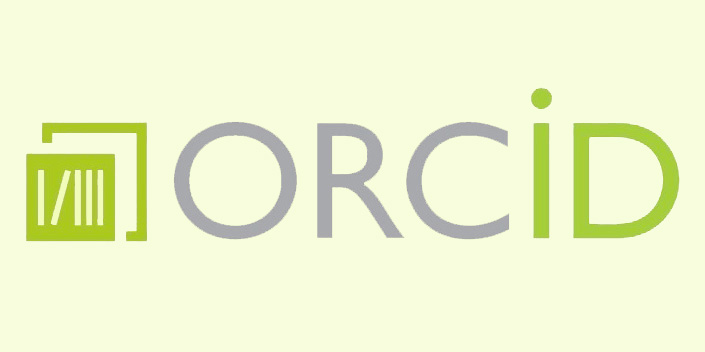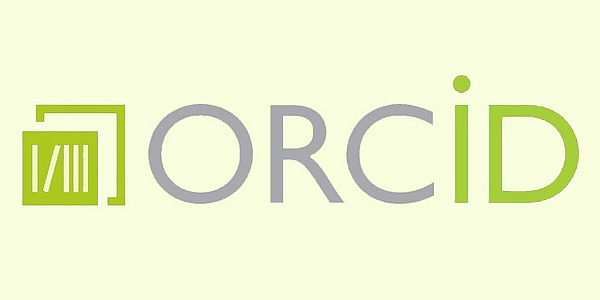What is ORCID?
ORCID is a 16-digit personal identifier that uniquely assigns your research output to you. This internationally recognized ID allows you to list and manage your academic achievements in one place - regardless of the employers during your career. In addition to publications – for example, journal papers – you may also add other types of research output to your ORCID profile, like presentations, patents and peer-review activities. Currently, you can choose from a total of 44 so-called 'work types' and decide for yourself which of them should be publicly visible.
What are the advantages of ORCID?
Your surname is Meyer, Lopez or Smith? Names are not unique. Therefore, you may be confused with other researchers and your research may be attributed to a different person. In many cases, name changes (for example, due to marriage), different spelling variations (for example, due to differently abbreviated first names), or spellings in different alphabets make it difficult to clearly credit research output to the correct person. With ORCID, you are uniquely identifiable and your research results can be clearly attributed to you. This increases the visibility and discoverability of your research, while protecting your reputation.
ORCID offers you even more advantages: The persistent identifier works just like an ISBN or a DOI. It creates a unique, constant connection between you and your publications – and is permanent. Before ORCID, the only permanent identifier for individuals was the ISNI. However, unlike an ISNI, which you can only obtain from the ISNI International Agency, researchers register for an ORCID and manage all the data themselves. The control remains entirely in the hands of researchers.
Another advantage of ORCID is that it is widely supported by publishers, research institutions, and funding agencies and simplifies managing your publications. Established publishers - such as Springer, Wiley, Elsevier, PLOS or the American Association for the Advancement of Science - support ORCID. This facilitates communication with publishers: Simply hand your ORCID to the publisher to provide them with all the information they need about you. This also reduces your administrative tasks with third-party funders and research funders. Some publishers and funders - such as The Royal Society and the FWF - now even make an ORCID for researchers mandatory.
You can also link a CRIS to your ORCID: Converis, Digital Measures, Elements, Faculty180, InfoEd, IRMA, PURE, DSpace CRIS, VIVO, Haplo and Worktribe. Starting with version 5.13, PURE offers the possibility to import your publications from ORCID to PURE.
Additionally, use your ORCID in your professional communication: Integrate it in your CV, business cards, website or email signature and increase the visibility of your research.
ORCID lives up to its own slogan "enter data once, re-use it often". It saves you time to do what’s actually important - your research.
ORCID - one ID among many?
Besides ORCID, there are also other IDs for researchers - but how do they differ from each other? Examples of such IDs are ResearcherID and ScopusID. Both IDs, like ORCID, represent a unique, permanent number that uniquely assigns your publications to you.
However, unlike ORCID, both are tied to proprietary systems: ResearcherID to Web of Science, ScopusID to Scopus, which belongs to the publisher Elsevier. These IDs only cover publications that are included in the respective system, Web of Science or Scopus. Access to these databases is a precondition for viewing the IDs and the information connected with them. With ORCID, you have the freedom to make any of your research output visible to all.
Re-use often: Capture publications once and use them everywhere.
Web of Science, Scopus, and your university's CRIS are not the only tools that allow you to exchange data with ORCID. Among them are BASE, CrossRef, DataCite and PubMed. ORCID offers a complete list of all databases that allow data exchange with it.
Use your ORCID!
Publishers and funding agencies are increasingly requiring an ORCID for individuals with a tie to a specific research project or output.
As a result, researchers often register an ORCID for the sole purpose of fulfilling this requirement. After the research project, the ID remains orphaned and much of its potential - connecting all of your research output with you, increasing the visibility of your research, and making it easier to manage your research – isn’t realized. Therefore, use your ORCID! Maintain it! You will quickly realize that it makes your workflow smoother.
But what happens to the data you enter? Are there any data protection concerns with ORCID? If you have questions about this, we recommend our next blog post. We will take a look at the organization behind ORCID and consider how ORCID handles and protects your data.
Links
Register an ORCID
List of work types in ORCID
List of systems that allow you to import data to ORCID




